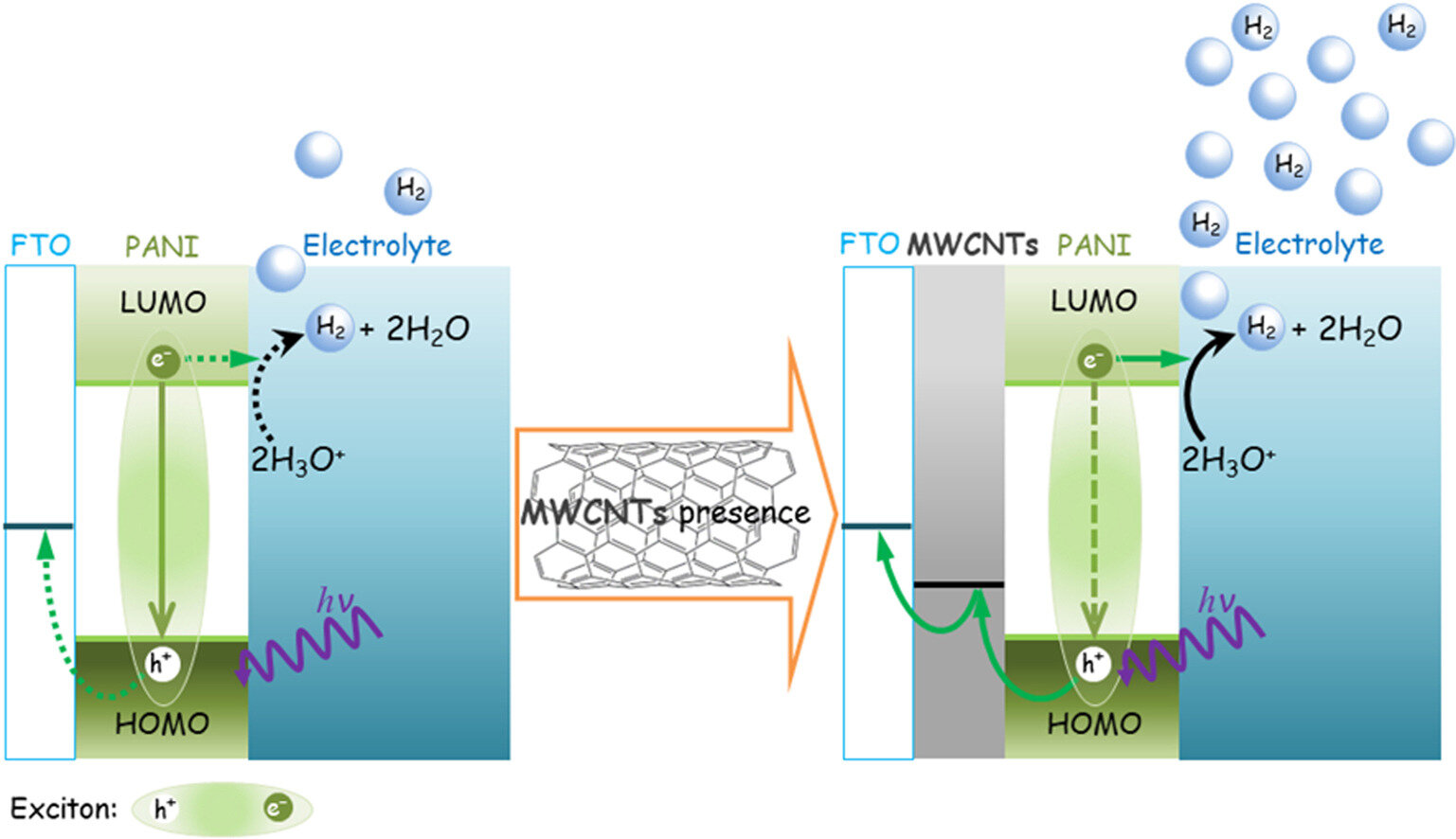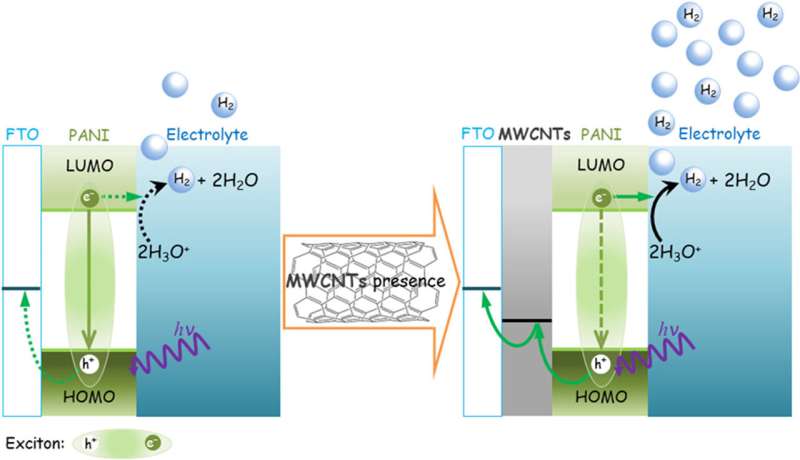

An article published in the journal Polymer describes the production of a material with the potential to be used to obtain hydrogen (H2) by solar-driven water splitting (photoelectrocatalysis) instead of the conventional electricity-driven process.
Also known as green hydrogen, H2 produced from renewable sources is a strong candidate for the accolade “fuel of the future.”
The article describes the preparation of films comprising polyaniline nanostructures with an underlayer of multi-walled carbon nanotubes and their promising photoelectrocatalysis performance, especially in H2 production, which requires good light absorption and enhanced stability, among other characteristics.
Polyaniline is an organic semiconductor belonging to the flexible polymer family. Although it was discovered over 150 years ago, it has only recently caught the attention of the scientific community owing to its high electrical conductivity.
The research involved groups at the Center for Development of Functional Materials (CDMF) and the Center for Innovation in New Energies (CINE).
More information:
Alessandra A. Correa et al, In situ polymerised polyaniline films over multi-walled carbon nanotubes coatings for enhanced photoelectrochemical performance, Polymer (2024). DOI: 10.1016/j.polymer.2024.126869
Citation:
Novel material shows potential to produce green hydrogen (2024, May 29)
retrieved 29 May 2024
from https://phys.org/news/2024-05-material-potential-green-hydrogen.html
This document is subject to copyright. Apart from any fair dealing for the purpose of private study or research, no
part may be reproduced without the written permission. The content is provided for information purposes only.

